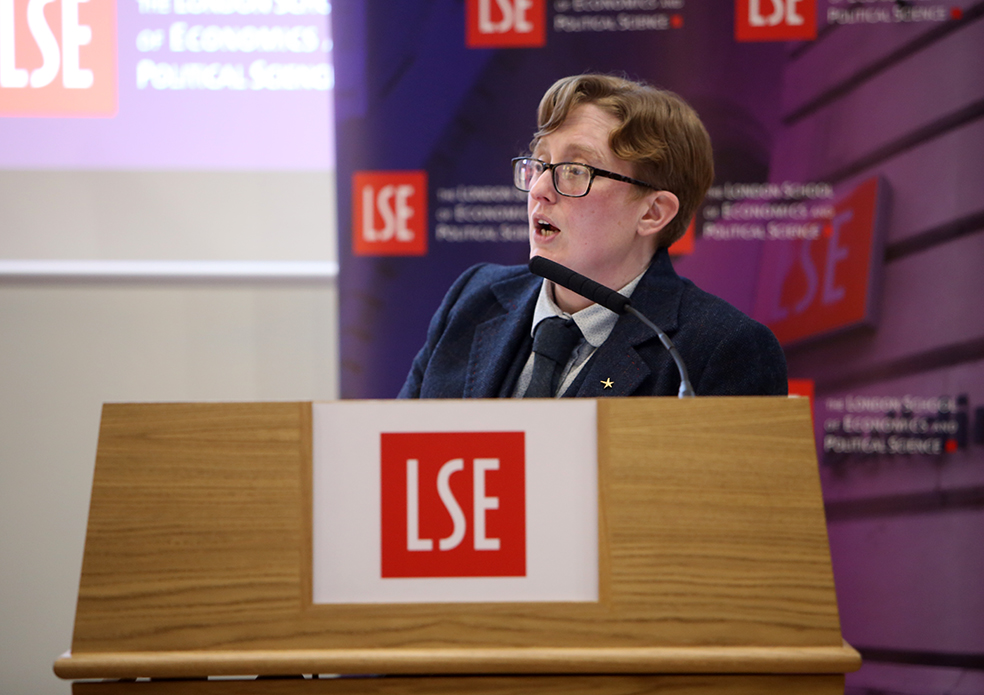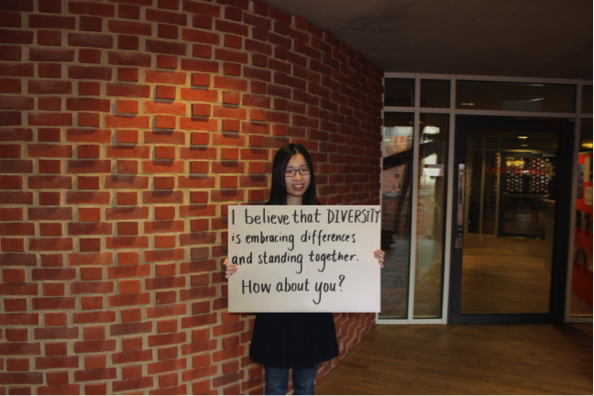UK is often celebrated as a good model of a diverse society. Indeed, our supermarkets cater for not only Christmas but also Diwali and Eid, curry has become the most popular dish in the UK and we see more BME people on the TV than we ever did. But, in all this colourful celebration of diversity, are we missing something? Snéha Khilay argues that discrimination is subtle and blurred but it’s definitely still there.

The UK has celebrated major religious events in the last few months – Christmas, Hanukah, Diwali and Eid. I am continually enthralled when I note the sections and products that cater specifically for these religious days in local large supermarkets. Staff also wear large lapel badges saying ‘Happy Diwali’, ‘Happy Eid’ and so on. Equally, I am amazed at the plethora of restaurants, including Mexican, Indian, Italian and Lebanese in my local high street. Curry is now widely recognised as a British national dish.
It is also common to see TV programmes and adverts with key characters from Black and/or Minority Ethnic backgrounds. Certainly on television, and to an extent in wider media, we have moved away from the stereotypes of young black men being muggers / criminals or Asian families working in corner shops and acting submissively. In cities, theatres actively celebrate diversity through productions which present music and dance from many countries. As a result, audience participation is now becoming more diverse, as opposed to the historical attendance profile of white/middle class. I do believe that Britain is now truly multicultural.
From organisational perspectives, and partly due to the changes in legislation, organisations are now taking proactive measures to ensure diversity is high on their corporate agenda. Savvy organisations recognise the business case for promoting diversity as a core value; this increases credibility when working internationally. Further, organisations have a better chance of securing large and/or public contracts through proving their commitment to and showing evidence of diversity.
I have seen a gradual change in the attitudes of staff and managers attending diversity-led training programmes over the past few years. Former levels of resistance and avoidance tactics/excuses used when attending (or not attending) these events is now rare. When conducting recent training programmes for managers (including traditionally male-dominated areas such as engineering firms), there have been more women participants although trainee groups remain mainly white, the biggest change is in attitude. Managers want to learn about the law and genuinely want to ‘get it right’, particularly when working with colleagues from different cultures.
In further education establishments, most universities have key representatives specialising in promoting Equality and Diversity. They in turn seek support from their network of colleagues in other universities, thus helping maintain the momentum of diversity into practice. Some voluntary organisations, working collaboratively, have nominated specialist staff members to support school children (and parents) who are experiencing bullying and harassment at school. Head Teachers are asked to be accountable for resolving and ending this, at times with the involvement of children again helping to maintain the Equality and Diversity momentum.
So, you could argue that we have made huge strides in taking Diversity to the next level. However as the title of this piece indicates, has diversity become a ‘sugar coated’ concept? I recently read an article in a national newspaper whereby a reader was advised to bring her complaints of sexual harassment at work to the attention of her manager and human resources. I was disheartened to read other readers’ comments, the majority of which indicated that they thought it less detrimental for the individual to leave the company rather than seeking resolution/recompense. Many told stories of raising concerns of discrimination in their workplace to only then to be penalised by demotion or exclusion in key decision making processes (or both). Staff surveys in both the private and public sectors indicate a significantly higher level of bullying and harassment than that brought to the attention of Human Resources. The question is whether staff surveys indicate a truer picture of bullying and harassment because of anonymous participation.
A black, female journalist wrote candidly of receiving racist and sexist comments in response to anything she writes on line. Although her articles do not focus on race or gender, she continues to receive abusive comments (she describes this as ‘bile hurled at her’) such as ‘Go back to where you came from’. She has also had the usual tirade of ‘If you don’t like it here…’ She even described someone taking the trouble to send a postcard showing a monkey sticking up its middle finger and listing reasons why black women had no place in a British newspaper. Although the paper made every effort, it was unable to identify the sender.
Similarly, there is an increasing number of homophobic tweets regarding celebrities who have disclosed their sexual orientation. Whilst some organisations have taken proactive measures in reprimanding staff for such behaviour, including on occasion dismissal, nonetheless negative and abusive comments continue. Whether these tweets are written in work time or private time, this sort of behaviour is unacceptable.
We now have comprehensive policies and legislation in place to prevent discrimination, with language controlled and policed as never before. There is a growing consciousness of the need for equality and for valuing individuals because of their differences. However, even if the incidence of blatant, in your face, prejudice has receded, the reality of the ‘fog of discrimination’ remains. It is subtle, blurred, and sometimes anonymous but, more often than not, unfortunately it’s still there.
 Snéha Khilay is a diversity and leadership consultant/trainer. She specialises in supporting organisations in meeting their statutory Equality and Diversity requirements. Snéha carries out consultancy and training on Diversity and Inclusion, Managing Diversity and the Law, Cultural Competency, Dignity at Work and Conflict Resolution. She conducts independent investigations and mediation for organisations into allegations of bullying and harassment. Snéha has published articles on diversity and leadership in Management Today, Start Your Business, Simply Business, Professional Manager, Change Board, People and People Management. Visit Snéha’s website at www.bluetuliptraining.co.uk
Snéha Khilay is a diversity and leadership consultant/trainer. She specialises in supporting organisations in meeting their statutory Equality and Diversity requirements. Snéha carries out consultancy and training on Diversity and Inclusion, Managing Diversity and the Law, Cultural Competency, Dignity at Work and Conflict Resolution. She conducts independent investigations and mediation for organisations into allegations of bullying and harassment. Snéha has published articles on diversity and leadership in Management Today, Start Your Business, Simply Business, Professional Manager, Change Board, People and People Management. Visit Snéha’s website at www.bluetuliptraining.co.uk





